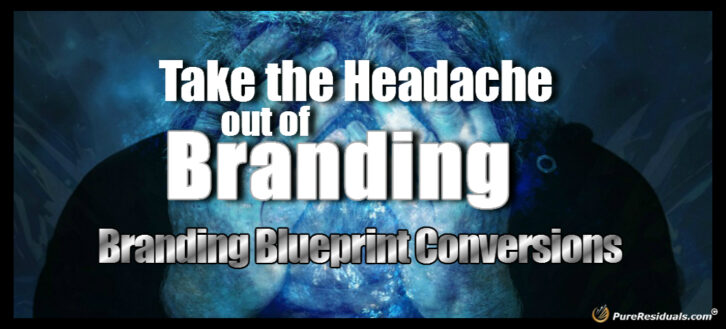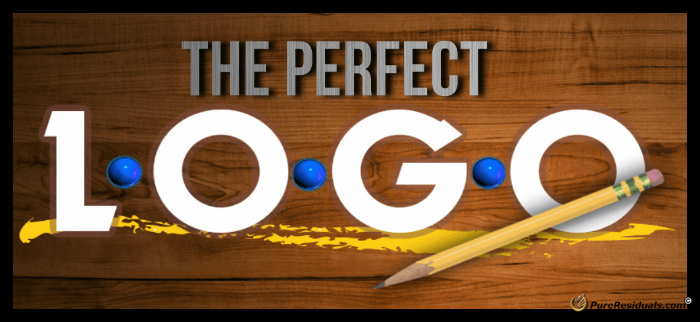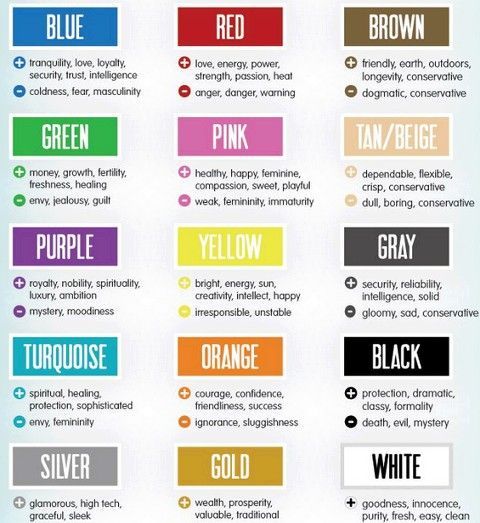What It Takes To Establish A Successful Brand
In the past couple of years, personal branding has been discussed widely throughout the internet. The difference between now and ten years ago when Tom Peters first mentioned it, is the rise of social sites that have made branding personal and within reach.
From company brands like BMW to the product brands like BMW X6 and down to the personal brands like Beyoncé, branding is an essential component to a consumer purchasing decision. These days, customer reviews, opinions, and complaints can be easily found online through a simple search on either social network or Google. You just cannot hide anymore; authenticity and transparency are the only ways to thrive and survive in this digital age.
A lot of people think that personal branding is only for celebrities such as Britney Spears or Taylor Swift, yet each one of us is a brand. Typically, personal branding is defined as the process by which we market ourselves to those around us. As a brand, one can leverage the same tactics and strategies that make these corporate brands or celebrities appeal to others. You can create and build your brand just like them. Social media platforms have leveled the playground and enabled many to create and build their personal and company brands, at the cost of time.
If you are looking to creating and building your brand, you need to understand the whole concept of branding. Using my knowledge and experience in internet marketing and within the branding field, I’ve compiled a unique and comprehensive guide that, if followed, will propel you to the top and enable you to create your own successful brand. However, before giving you a recap of my Branding Blueprint Conversion guide, here are essential strategies you need to keep in mind to help your target audience appreciate, understand, and become loyal to your brand.
1. Understand Your Brand
Before you build your brand, you need to know and understand what your brand equals. To do this, write down all the characteristics that best describe who you are, and how you would like people to perceive you. Once you compile this list, fine-tune it to make sure you pick only those characteristics that will make you have complete control and command of your brand in order to reach your potential customers. It is these adjectives and characteristics that make your brand unique and differentiate it from your competitors. They also provide a clear understanding of what your company or business is known for and what is capable of doing.
You need to identify a particular audience to serve and do your calculations to know whether it is large enough to assist in sensible business growth.
Some of the few questions you need to ask yourself includes;
– In which sector/niche do you want your business to operate?
– Who are your targeting and your potential audience?
– What makes your business stand out from the rest; is it your location, service quality, efficiency?
– What was your reason for starting your business in the first place?
By defining who you are, the value you offer to your customers, and why you are in the business, you’ll understand your brand better, and this will help you establish your brand personality. This will act as the foundation for your brand.
2. Identify and Understand Your Competitors
In the process of understanding your market, you need also to understand your competitors. A successful brand should disrupt the status quo of other brands in the market when securing your own position based on the unique qualities you possess which differentiate you from other players in the market. To identify and understand your competitors, ask yourself the following few questions;
– Who are the main brands operating in the same niche as you?
– What are their strongholds and weaknesses?
– What are their marketing strategies? Which marketing channels are used – social media, radio, website, TV?
– Can you offer their customers with something extra or better that your competitor can’t?
– Are they offering something that you can’t or aren’t?
Analyzing your competitors will help you identify opportunities that you can maximize on to help your business establish a foothold in your specific niche.
3. Have a Striking, Memorable Logo
One main element that successful business have is a memorable and distinctive logo. Your logo should effectively represent your brand and should be something that people can automatically recognize when they come across it. When designing your brand logo, keep in mind the following things:
– Use bold colors– colors are a key element when designing your brand logo. Bold and striking colors are memorable and catchy to the eyes. That’s why you’ll see many business and company logos featuring striking, bold colors. Choose a color that represents your brand. Make sure that each color you choose represent something. For instance, red can mean urgency, pink- romantic, blue- trust, yellow-youthful, purple. By utilizing this to your advantage, you can create a successful colored logo.
– Keep it simple– most successful brand names have one thing in common; a simple logo design. The reason simple logo designs work so well is that they stick to the mind and are easy to remember. This is why you need to keep it simple and inventive.
The design of the logo is what brings the difference between a memorable and less memorable logo. If you look at major brands such as Subway, KFC, or McDonald’s, you’ll notice that they all have simple designs and bold colors. Take time to design your logo so as to remain competitive in your industry.
4. Powerful Visual Identity
Your brand needs to have various visual elements in order to create a powerful visual identity. Some of the key elements to consider when creating visual identity include;
- Using High-Quality Images– Using high quality and professional images is one way of improving your visual identity. When marketing your brand through various advertising channels, you have to make sure that they are high quality and are suitable for that channel. This shows that you are a professional business and this will help to create trust.
- Using The Right Font– the font you choose to represent your brand is also important. Different fonts reflect different levels of professionalism. For instance Times New Roman is a professional voice, Comic Sans reflect comedy, Cambria shows Research-related voice.
Choose a font that represents you well to your potential customers’ eyes.
With those basics of branding in mind, allow me to share with you a glimpse of what you’ll get in my guide, Branding Blueprint Conversions. This guide will open your eyes and give you a different and better perspective of branding.
The guide comes with nine quality video courses, with each covering a different technique you can use to boost your brand.
Here is a summary of the nine video courses you’ll get after downloading Branding Blueprint Conversions;
1. Introduction to Branding Blueprint Conversions
This is the introductory chapter, and it will introduce you to what branding entails and a brief history of branding. This chapter will also introduce you to this guide by describing what to expect from every chapter in this guide. This will help in the smooth transition from one chapter to another as you’ll know what’s covered in the next chapter.
2. Personal Branding vs. Company Branding
One of the decisions you’ll need to make in branding is determining whether you want to build personal or company brand. A personal brand is based on your personality. There are positives and negatives to personal branding, and you’ll learn them in this video course. Company branding is based on the identity you create for your company. This means you’ll need to come up with a name that’s independent of your name. Again, there’re pros and cons to this, and you’ll find them discussed at length in this chapter.
Branding is broad, and you need to know the route to take. You can either create a personalized brand or corporate brand. This depends on the audience you want to reach and your financial muscle.
In this chapter, you’ll learn the distinction between personal branding and company branding and how both of them compare. You’ll also learn what it takes to boost your brand at both personal and corporate level so that you can decide the best route that suits you.
3. Invoke Emotions
Branding is incredibly important as it distinguishes you from your competitors. How successful your brand will be will not depend much on your logo fonts and design, but it’s about forming an emotional connection with those who associate with your brand. Invoking emotions in your potential customers will enable you to create an intrinsic relationships between your brand and consumers.
Some of the things you’ll get discussed in this chapter include how you can invoke emotions of your potential customers through techniques such as personalized marketing approach.
Creating an emotional bond with your potential customers requires more than intensive marketing- you need to put the needs of your potential customers ahead of your service or product. You’ll learn a lot about the need to invoke the emotions of your customers in this chapter.
4. Name Creation
A suitable brand name can be the difference between success and failure. Great brand names are usually discovered after a lengthy process of plodding research, careful strategizing, inspiration and methodical, creative exploration.
A brilliant name sets the playing ground for a brand. If you read the list of Top 100 brands, you always see names that evoke trust and meaning: VISA, Google, Facebook, Coca-Cola, Red Bull, Amazon.com, Twitter and many others.
Without explanation or description, you know these brands. You know what they represent, what they are, and where they fit in your life. In this chapter, you’ll learn the tips and techniques of coming up with a suitable brand name for your product or yourself. Naming your brand is a decision that can dictate the future of your business.
5. Color Psychology
Design is mostly about the first impression, and one of the factors influencing design is color. Color pairings, usage, and choices can affect how someone perceives a website, billboard, or a product packaging. Whether you agree or not, colors evoke emotions, memories, and feelings, and as you look to create and build your brand, you need to tap into those emotions evoked by different colors. You’ll learn more about color psychology and how you can use it to your advantage in this video course.
6. Company Colors
Imagine building a product that is meant to make people feel sophisticated and sexy, and then using a brand logo with bright green color; you’ll definitely leave your consumers confused. This is because different colors represent different feelings. Green conveys nature, earth, or caring feelings.
The human mind is responsive to visual stimuli and color is one of defining factors in that response. Color convey meaning in both conscious and subconscious level. You need to harness and maximize the power of color to bring out resonance in your brand. In this chapter, you’ll learn how different colors affect customers’ perception to your brand.
7. Color Themes
Having chosen your brand color, you need to come up with a color theme to compliment your brand color. Color themes will help in creating your intended visual experience and make your brand more attractive. Choosing a suitable color scheme can be challenging as you try to come up with the right color combination. Where will you find inspiration? How do I pick between all these pretty colors?
You’ll learn how to play with several colors to bring out a pleasant combination that appeals to your audience/customers.
8. Custom Logo Creation
After knowing a suitable color, color themes, and name for your brand, it’s now time to design the logo. You’ll learn how to create a suitable and striking logo and where you can have them designed. You’ll learn all these in this video content.
9. Custom Mascot Creation
This should be the last step in your brand creation. Having created and designed your brand logo, you’ll need to find a mascot that goes with your brand. You’ll learn all the techniques of coming up with a suitable mascot in this video content.
Branding: The Bottom Line
The above are the video content covered in Branding Blueprint Conversions guide. Following the techniques in this guide will propel your brand to higher heights and enable you to achieve success in your business or company. Purchase the guide today and be the next success story in 2017.







